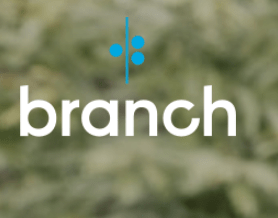For many business school students, there’s a simple formula where summer internships are concerned. Target a company where you aspire to work, recruit successfully for a summer internship, perform well and show your smarts. Voilá, come summer’s end, you’ve landed your post-MBA job.
Especially in some industries—consulting and investment banking, for example—the path from summer internship to full-time offer is certainly the most common and, in some instances, all but required.
But what if you want to find out what it’s like to work for a startup? Or for a nonprofit focused on social impact? Or to try to get your own venture off the ground? What are some of the less traditional summer internship paths and who are they right for?
When Stanford Graduate School of Business (GSB) released its 2017 MBA Employment Report late last year, it revealed that 27 students took part in the Entrepreneurial Summer Program (ESP) offered by the school’s Center for Entrepreneurial Studies (CES), which helps support students who choose to pursue internship opportunities with entrepreneurial organizations.
Another 28 students benefited from a Stanford Management Internship Fund (SMIF) fellowship offered by the Center for Social Innovation (CSI). SMIF provides financial support to MBA students who choose socially or environmentally focused internships with nonprofits, government agencies, and social purpose businesses.
And an additional 21 students across Stanford (not just the GSB) participated in Stanford Institute for Innovation in Developing Economies (SEED) internships, working for companies in emerging markets. Out of just 304 students seeking internships—that’s a hefty percentage opting for off-the-beaten-track ways to spend their summer.
What drew them to these opportunities? How do they work? What did they learn? Would they do it again? To find out, we talked to several Stanford MBA students for whom the internship experience was anything but routine. The experiences they shared suggest an array of fascinating alternatives to the traditional summer internship path.
Read on to learn a few of the many reasons less traditional summer internships appealed to the students we interviewed.
Non-Traditional MBA Summer Internships Hold Wide-Ranging Appeal for Stanford GSB Students

For the summer between her first and second years of business school, Jenny Molyneaux, MBA ’17, headed to Nairobi, Kenya, where she interned with Branch, a for-profit socially conscious company that seeks to bring banking services to individuals in emerging markets via mobile technology. Her recruiting process began over a beer at the local watering hole called Treehouse with Branch Co-Founder and CEO Matt Flannery, a Stanford University alumnus who previously co-founded of microlending platform Kiva.
Testing Hypotheses
“I knew pretty quickly that it was the type of internship opportunity I was looking for,” Molyneaux told us. “Specifically, it helped me test out a lot of different hypotheses simultaneously.” Though she had worked for startups in the past, they had been in online education and mobile gaming. “I had a hunch I would really enjoy being in financial technology,” she said. Hypothesis number one.
She also hoped to gain some experience in an emerging market. Here, in particular, the MBA summer internship seemed to provide an ideal opportunity. “I will have chances to kick the tires on lots of more traditional opportunities throughout my career, but this meant doing something that for me felt pretty out there,” she said. “Moving to Kenya for a summer was something I could do in this unique, bounded, three-month period,” she said. “It was something I had considered in my past, but I had never had the courage or the conviction to take a full-time role.” Hypothesis number two.
Finally, she wanted to really see what product management was like. “I had a little bit of exposure in my previous role, but I really wanted a deeper dive,” she said. Hypothesis number three.
 Her summer at Branch gave her the opportunity to test all three, and it let her feel like a full-time team member from day one. “That’s another reason I wanted to intern with a startup—I was not just in a training situation where I was just overseeing what someone else was doing,” she said. Instead, she played an integral role in helping Branch confront a major issue it was having with borrowers defaulting on loans. “We were going through a crisis,” Flannery recalled. “We had all this fraud in Kenya and needed to figure out a way to fight it—Jenny really helped us turn it around.” Specifically, she oversaw the newly formed collections team in Nairobi. “It was a great opportunity to jump into this critical process the company needed help with,” she said.
Her summer at Branch gave her the opportunity to test all three, and it let her feel like a full-time team member from day one. “That’s another reason I wanted to intern with a startup—I was not just in a training situation where I was just overseeing what someone else was doing,” she said. Instead, she played an integral role in helping Branch confront a major issue it was having with borrowers defaulting on loans. “We were going through a crisis,” Flannery recalled. “We had all this fraud in Kenya and needed to figure out a way to fight it—Jenny really helped us turn it around.” Specifically, she oversaw the newly formed collections team in Nairobi. “It was a great opportunity to jump into this critical process the company needed help with,” she said.





